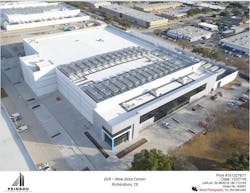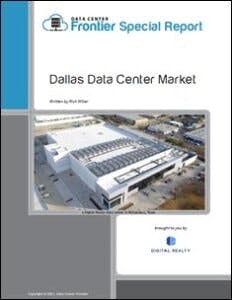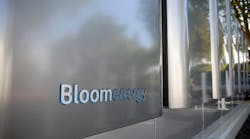Leasing Demand Gains Pace in Dallas Data Center Market
The Dallas data center market is very competitive and is the third largest in terms of capacity, led only by Northern Virginia and Silicon Valley. This launches our special report series on the Dallas Data Center Market.
Get the full report.
The Dallas/Fort Worth region is one of the busiest and most competitive data center markets in the U.S., and is entering a period of stabilization as developers seek to match their construction timetables with market demand.
With hundreds of megawatts of potential capacity on the drawing board in the Dallas area, data center providers are striking a balance between their available inventory and leasing demand, which has gained pace in recent months.
Dallas is a favored market for both developers and IT end users, benefiting from excellent power and fiber infrastructure, competitive economic incentives and robust competition among service providers.
The Dallas/Fort Worth data center market is home to 3.6 million square feet of commissioned data center space, which translates to 423 megawatts (MWs) of commissioned power, according to datacenterHawk data from the second quarter of 2021. This makes the region the third-largest data center market for capacity in the U.S., behind Northern Virginia and Silicon Valley.
The Dallas market is attracting interest from multiple financial companies looking for their next data center location. Several financial corporations are currently in the market for enterprise leases. These requirements drove an uptick in activity in the latter half of 2021 in the region.
One of the most noteworthy aspects of the Dallas market is the diversity of its data center ecosystem. Demand spans all sectors of the data center industry, including retail colocation, wholesale data center space, powered shell and build-to-suit projects. The market is boosted by its location in the center of the country, and sees demand for space from multiple business verticals, including hosting and cloud players as well as enterprise customers in finance and energy.
The Dallas/Fort Worth region is the third- largest data center market for capacity in the U.S., behind Northern Virginia and Silicon Valley.
One variable to watch over the next several years will be end users’ attitudes about the reliability of the Texas power grid. The state of Texas operates its own power grid, isolating it from power outages from other regional interconnection markets. This has historically been a selling point for Dallas, but the reputation of the ERCOT grid has taken a hit due to the lengthy outages and price spikes during the winter storm that hit Texas in February 2021. The event creates both challenges and opportunities for the commercial data center industry (see the Business Environment section in the special report for more on this).
Background and History
The Dallas/Fort Worth data center market has grown steadily over the past fifteen years. Demand in the DFW market often originates from companies with a large presence in the area. However, many companies outside the area evaluating the DFW market find it appealing.
The economy in Dallas/Fort Worth has drawn large corporate relocations to the market in recent years. Most companies go to Texas due to the state’s central location, affordable real estate prices, and good tax incentives. According to Moody’s, the cost of doing business in Dallas is 4% lower than the national average, and less than half the cost of doing business in New York or San Francisco.
The DFW area in particular has a diversified labor force, with strong growth recently from the technology and services industries. Between February 2019 and February 2020, the DFW market created jobs at a 2.6% rate which is better than the rest of the state (3.0%) and the United States overall (1.5%), as per the Bureau of Labor Statistics. In addition, the DFW market’s unemployment rate is currently 3.2% and has continually declined since 2009.
The early growth of DFW’s data center market was focused in downtown Dallas. Because the central business district is rich in telecommunication infrastructure, several large office buildings were retrofit for data center use, most prominently the Infomart Dallas, 2323 Bryan Street and the former Federal Reserve Building. These buildings typically attract smaller colocation customers, along with telecommunications companies.
As the colocation market grew significantly in 2009 and 2010, these companies expanded beyond downtown. An obvious expansion route was the northern suburbs of Dallas, which boomed during the 1990s when the “Telecom Corridor” attracted dozens of leading companies in the telecom, software and semiconductor sectors. This area was hit hard during the dot-bust of 2001 to 2003, but has seen a new round of growth as Dallas has emerged as a hotbed for hosting and colocation. Cities like Richardson, Plano, Carrollton, Allen and Garland benefited from the growth by offering sites and buildings with expansion opportunities. In addition, most colocation providers in the DFW market are choosing to construct new facilities instead of retrofitting existing buildings worthy of conversion.
Download the full report, Dallas Data Center Market, courtesy of Digital Realty to learn more about this competitive data center market. In our next article, we’ll look at market trends in supply and demand.
About the Author



